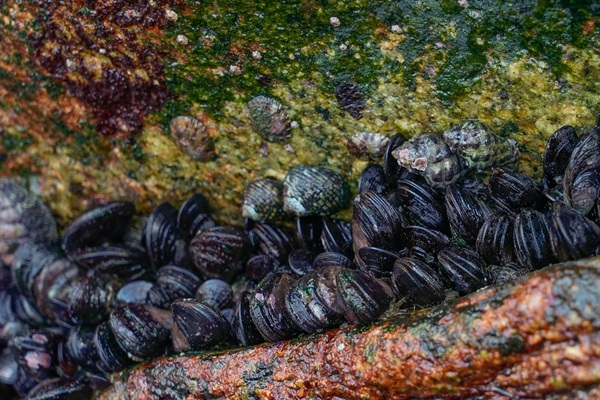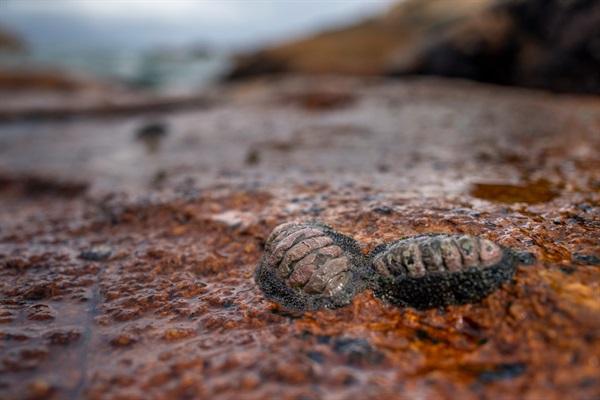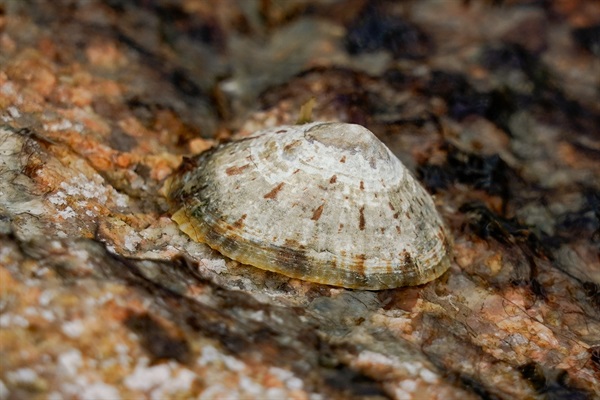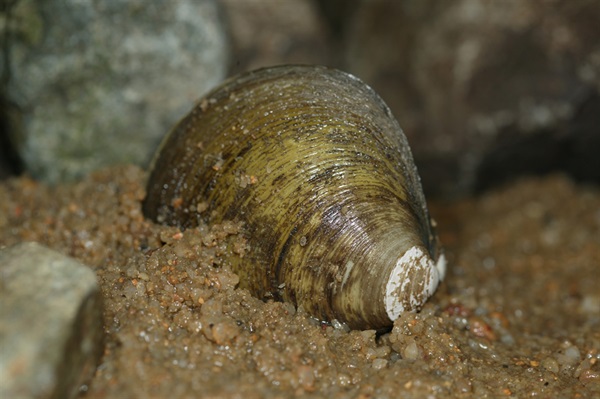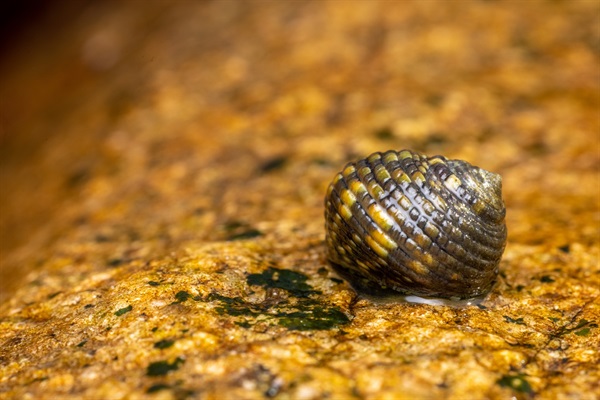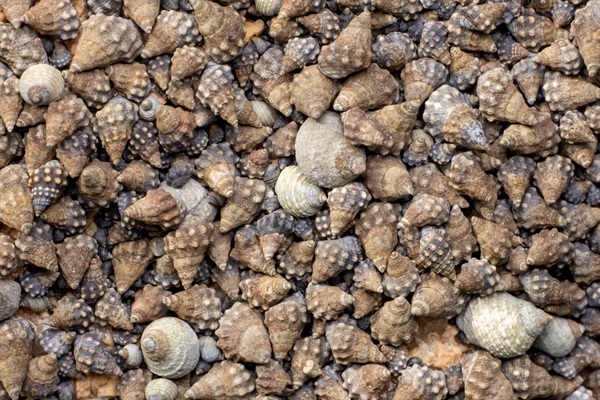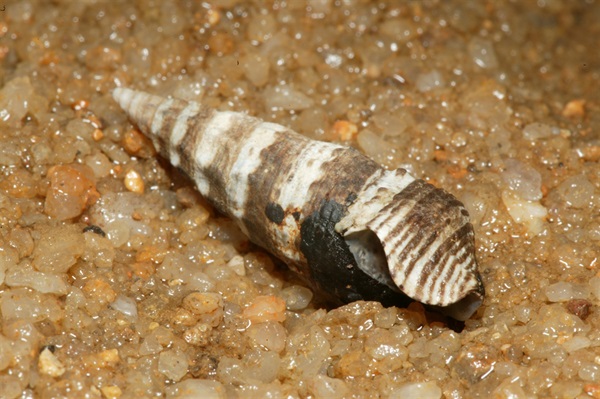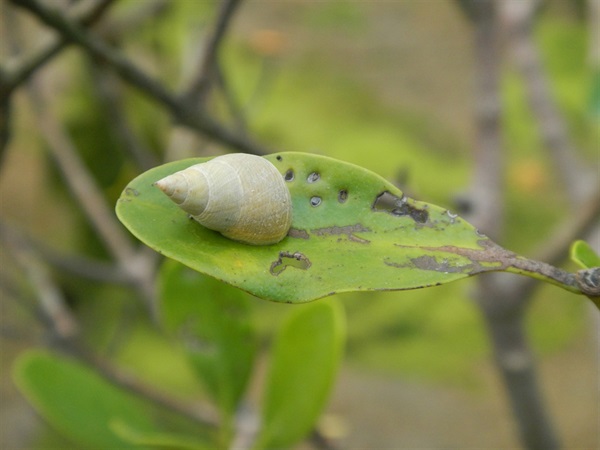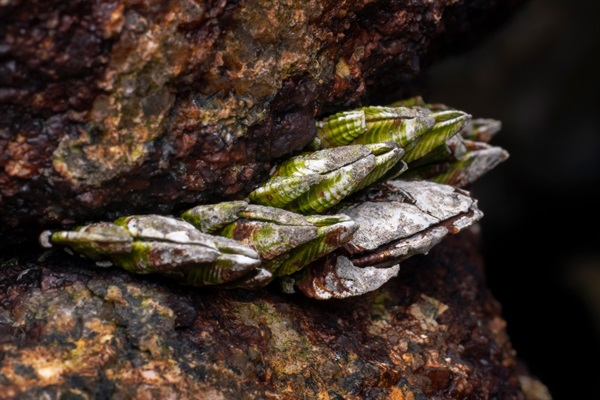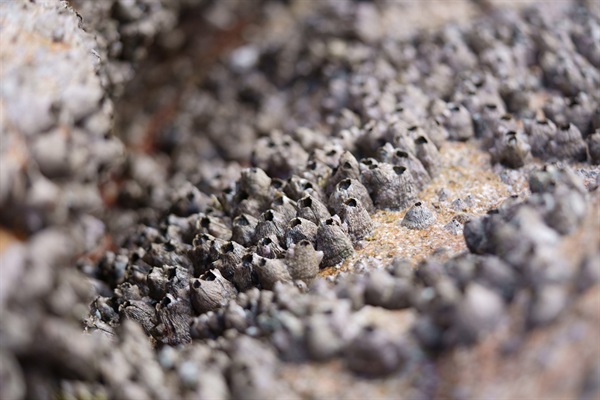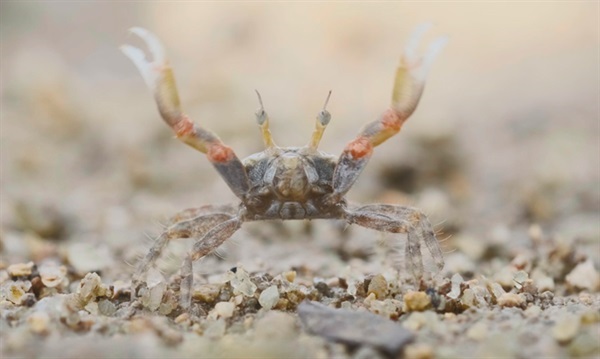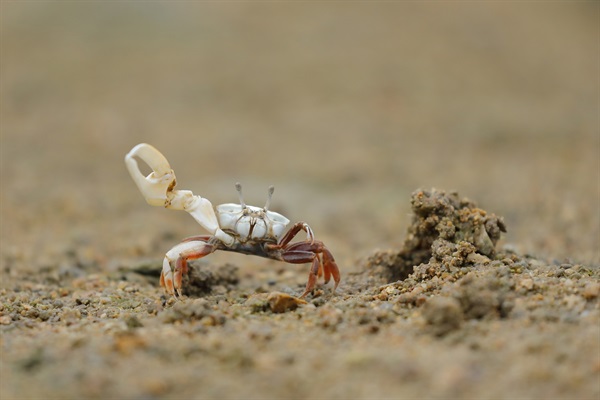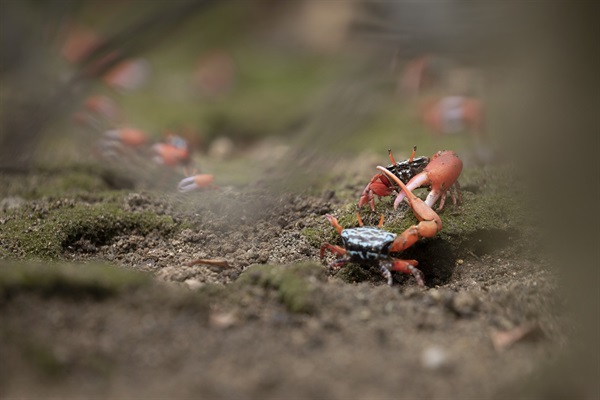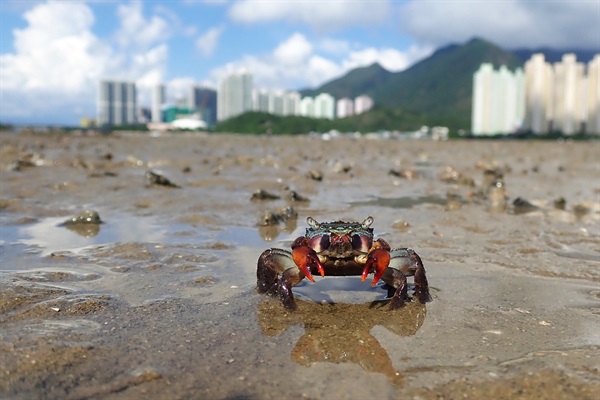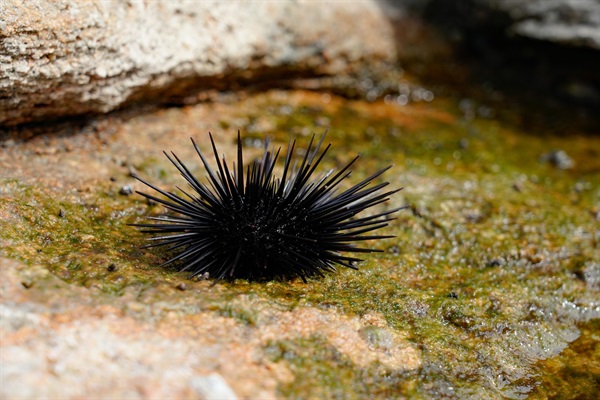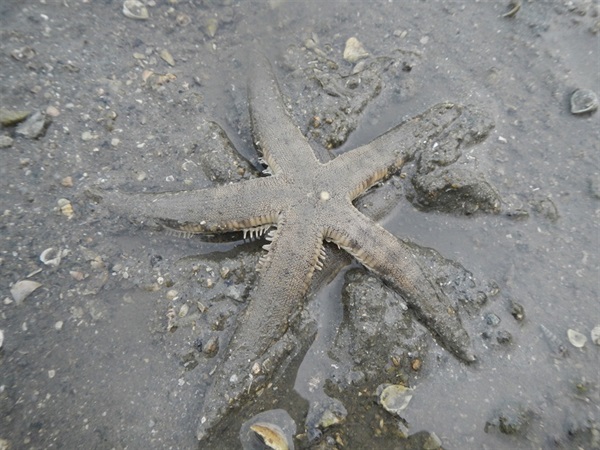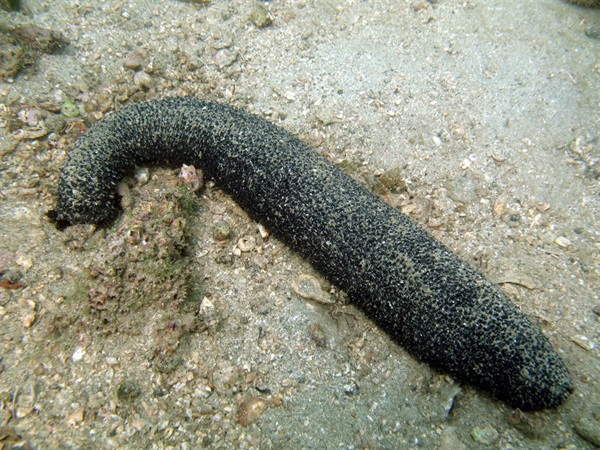The intertidal zone is the area where the land meets the sea. It is submerged by seawater when the tide comes in and emerges when the tide recedes. To face such a harsh environment with incessant alternations between living above and below seawater, intertidal species exhibit various adaptive physiological and behavioural traits. Intertidal habitats are highly productive areas that substantially contribute to coastal food chains. These habitats can be generally categorised into hard and soft shores: hard shores, also known as rocky shores and boulder shores, host many sessile species that are more resistant to wave actions (e.g. barnacles, oysters and mussels), whereas the soft shores (e.g. sandy shores and mudflats) support many burrowing animals (or infauna). Some mudflats located at river mouths also support the growth of mangrove plants that can adapt to periodic seawater submersion, meanwhile serving as a habitat for other organisms. Species communities are not only different between exposed and sheltered habitats, but they also vary between shore levels within the same habitat, forming a vertical zonation pattern. Typically, intertidal habitats can be divided into high-, mid- and low-shore zones, and each hosts a unique set of communities. With the shortest tidal immersion duration, the high-shore zone is normally occupied by species that are more tolerant to desiccation and heat stresses. Invertebrates, such as molluscs, crustaceans, echinoderms and polychaetes, are the main components of local intertidal fauna.
Phylum Mollusca: Bivalves and Gastropods
Bivalves are the only molluscs with no radula. They rely on the gills in their mantle cavity to filter food and breathe. When seawater flows through the gills, the fine organic particles are filtered. Bivalves include clams, mussels, oysters, etc.. These animals have flat bodies and their two shells are connected by elastic ligaments. The two shells are typically bilaterally symmetrical, but some sessile species (e.g. oysters) have their lower shell smaller than the upper shell. Mussels are different from oysters in that they can stand on hard substrata with byssus, while both can attach firmly on rocky shores. The Purplish Bifurcate Mussel (Mytilisepta virgata) is commonly found on exposed rocky shores, whereas the Rock Oyster (Saccostrea cuccullata) and the Asian Green Mussel (Perna viridis) occur more often on sheltered rocky shores. Clams can burrow into the sand or mud with their feet, so they often inhabit sandy shores and mudflats. The family Veneridae is among the most common groups of bivalves living on local soft shores. There are also species that are more abundant in local mangroves, such as the Mangrove Clam (Geloina expansa).
Gastropods include snails and slugs, which are generally characterised by a single shell, a single foot and an asymmetric body. While the shell has been totally lost, or reduced in slugs, both snails and slugs crawl slowly, mainly using waves of muscular contraction of the single foot. Common gastropods on rocky shores include limpets, topshells, whelks, nerites, periwinkles, etc., while those commonly occur on sandy shores and mudflats include batillariids, potamidids, nerites, etc.. Besides, there are also species which live on mangrove tree canopies, such as the mangrove periwinkles (Littoraria spp.).
Chiton is a primitive marine mollusc. It bears eight overlapping plates on its oval flattened body which serve as armour. It is usually found creeping slowly on its muscular foot in the low-shore zone of rocky shores. To withstand the strong wave actions on rocky shores, chiton creates powerful suction and attaches itself tenaciously on rock surfaces. Japanese Common Chiton (Liolophura japonica) is the chiton species commonly found in Hong Kong.
Phylum Arthropoda: Barnacles and Crabs
Barnacles are a group of volcano-like organisms commonly found in the intertidal zone. The shell of barnacles is made up of various kinds of calcium compounds, with an opening at the centre consisting of movable plates. When submerged by seawater, a barnacle will open the plates and extend its feathery cirri to capture planktons. During low tide, the barnacle will seal the opening by the plates to avoid water loss and protect itself from predators. In Hong Kong, Stalked Barnacle (Capitulum mitella) and barnacles from the family Tetraclitidae can be commonly found on rocky shores, whereas those from the families Balanidae and Chthamalidae can be readily found on rocky shores and mangrove trees.
Crabs belong to the Order Decapoda (meaning 'ten legs', namely one pair of Chelae and 4 pairs of ambulatory legs). The dorsal side of a crab's body is covered by a carapace, whereas the mouthparts and a folded abdomen are found on the ventral side. Intertidal crabs often possess modified gills and exhibit various adpative behaviours to overcome heat and dessication stresses during low-tide periods. Most of these crabs are also small in size, which gives them the advantage to hide easily in burrows. Local sandy shores and mudflats are especially rich in crab species, such as those from the families Portunidae, Grapsidae, Sesarmidae, Ocypodidae, Varunidae, Dotillidae, Mictyridae and Macrophthalmidae. In recent years, local scholars have also discovered a new crab species, namely the Ting Kok Tree Climbing Crab (Haberma tingkok), that inhabits mangrove trees, and has so far only been recorded in Hong Kong.
Phylum Echinodermata: Starfish, Sea Urchins and Sea Cucumbers
Internal skeletons of echinoderms are composed of calcium carbonate, which evolve into calcareous plates or spines that serve for excellent protection. Echinoderms possess a unique water vascular system and tube feet. The former is a network of fluid-filled canals that serve the functions of breathing, movement, excretion and sensory reception, etc., and the latter are part of the water vascular system that facilitate locomotion. Some species have suckers on the tube feet that allow them to withstand strong wave actions. It is worth mentioning that most echinoderms have excellent regenerative ability. Although most echinoderms are benthic, some local species readily appear in the low-shore zone, such as the Purple Sea Urchin (Heliocidaris crassispina) on rocky shores, and the Sand Star (Archaster typicus) and the Black Sea Cucumber (Holothuria leucospilota) on sandy shores.
